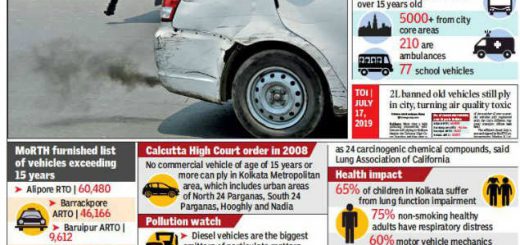Light Commercial Vehicle Market 2019
Light Commercial Vehicle Market 2019 Global Size, Trends, Potential Growth Key Factors, Competitive Analysis, Share, Key Players, Demand, Regional Outlook, Forecast To 2023
According to the latest report Light Commercial Vehicle Market Research Report: Information by Type (Trucks, Vans, Buses, Coaches, and Others), by Fuel Type (Diesel, Gasoline, and Electric), and by Region (North America, Europe, Asia-Pacific, and the RoW) and by Regions with Forecast To 2023, published by Market Research Future, the Global Light Commercial Vehicles Market is projected to witness ~4.5% CAGR During Forecast Period 2019-2023.
Light Commercial Vehicle Market Key Players:
The prominent players in the global light commercial vehicles market include Daimler AG (Germany), Volvo Group (Sweden), Dongfeng Motor Corporation (China), Volkswagen Group (Germany), Tata Group (India), Ford Motor Company (US), Groupe PSA (France), General Motors (US), Hyundai Motor Company (South Korea), and Groupe Renault (France).
Get Free Sample “Light Commercial Vehicle Market Research Report-Global Forecast till 2023” At:
https://www.marketresearchfuture.com/sample_request/7726

Light Commercial Vehicle Market 2019 Global Size, Trends, Potential Growth Key Factors, Competitive Analysis, Share, Key Players, Demand, Regional Outlook, Forecast To 2023
Light Commercial Vehicle Market Drivers and Restraints:
Light commercial vehicles are primarily used for carrying goods and mass measured in tons to differentiate between light and heavy commercial vehicles. According to the International Organization of Motor Vehicle Manufacturers (OICA), the light commercial vehicles are special vehicles, which are characterized in terms of gross vehicle weight (GVW). These vehicles have the maximum mass varying between 3.5 and 7 tons.
The stringent government norms related to emissions, rise in the global oil prices, and rising penetration of downsized engines in LCVs are the main factors for the growth of the global light commercial vehicle market. Additionally, the growth of electric era of electric automobiles will create opportunities for the manufacturers to invest and meet the demand for electric light commercial vehicles in the global market. However, the demand for downsized engines is expected to increase the LCVs price, which is expected to hinder the growth of the global light commercial vehicles market.
The automotive OEMs engaged in the manufacture and distribution of light commercial vehicles aim at finishing the past inventory and start new production to meet the new emission standards, at the global level. Moreover, the automotive OEMs are shifting their preference from the production of passenger cars to the production of light commercial vehicles owing to urbanization and the rise in consumption of goods, around the globe. According to the Statistics Netherlands, a Dutch governmental institution, in 2017, there was a 2.2% y-o-y growth in transportation of goods by road in the domestic market, which has increased the demand for light commercial vehicles in the country . Additionally, there has been higher growth in the transportation of goods in Europe and Asia-Pacific by road than rail or marine, owing to the massive growth in the sales of e-commerce products, which would further lead to the demand for light commercial vehicles during the forecast period. Thus, the global light commercial vehicles market is estimated to witness ~4.5% CAGR during the period, 2019-2025.
Global Light Commercial Vehicle MarketSegments Analysis:
The global light commercial vehicles market is segmented on the basis of type, fuel type, and region.
On the basis of type, the market has been segmented into trucks, buses, vans, coaches, and others. The trucks segment is expected to dominate the market during the forecast period. Also, the vans segment is expected to lead the global light commercial vehicle market by type in terms of CAGR during the forecast period.
On the basis of fuel type, the market has been segmented into diesel, gasoline, and electric. The diesel light commercial vehicle segment is estimated to dominate the market in terms of value and volume during the forecast period.
Global Light Commercial Vehicle Market Regional Analysis:Geographically, the global light commercial vehicles market has been segmented into four regions, namely, North America, Europe, Asia-Pacific, and the Rest of the World. North America is expected to hold the prominent market share during the forecast period owing to the growing domestic e-commerce industry leading to the strong growth of the transportation industry. On the other hand, Asia-Pacific is estimated to witness substantial growth in the global market with the rising automotive production in China, India, and ASEAN countries and stringent government regulations for emissions from the light commercial vehicles.
Report Overview:
The report for Global Light Commercial Vehicle Market of Market Research Future comprises of extensive primary research along with the detailed analysis of qualitative as well as quantitative aspects by various industry experts, key opinion leaders to gain the deeper insight of the market and industry performance. The report gives the clear picture of current market scenario which includes historical and projected market size in terms of value, technological advancement, macro economical and governing factors in the market. The report provides details information and strategies of the top key players in the industry. The report also gives a broad study of the different market segments and regions.
Table Of Contents
1. Executive Summary
2. Scope Of The Report
2.1. Market Definition
2.2. Scope Of The Study
2.2.1. Definition
2.2.2. Research Objective
2.2.3. Assumptions
2.2.4. Limitations
2.3. Research Process
2.3.1. Primary Research
2.3.2. Secondary Research
2.4. Market Size Estimation
2.5. Forecast Model
3. Market Landscape
3.1. Porter’s Five Forces Analysis
3.1.1. Threat Of New Entrants
3.1.2. Bargaining Power Of Buyers
3.1.3. Threat Of Substitutes
3.1.4. Segment Rivalry
3.1.5. Bargaining Power Of Buyers
3.2. Value Chain/Supply Chain Analysis
4. Market Dynamics
4.1. Introduction
4.2. Market Drivers
4.3. Market Restraints
4.4. Market Opportunities
4.5. Market Trends
Source: https://on.mktw.net/2WYdK0z




Recent Comments